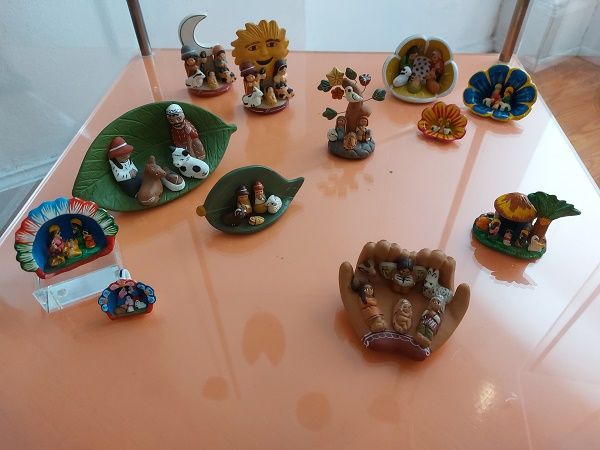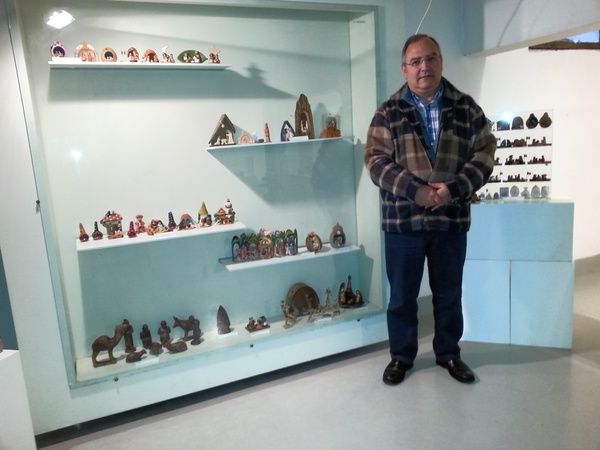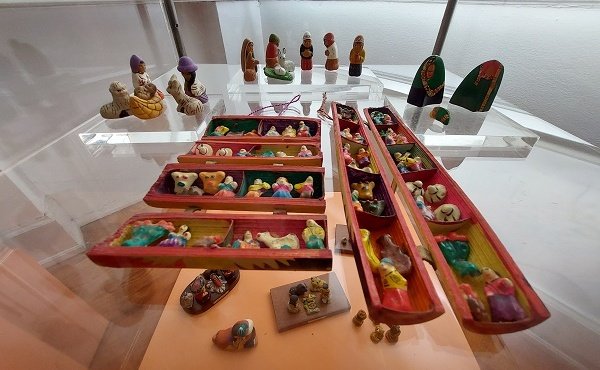Joseba, an associate of Opus Dei, passed away last August. The Liste Museum in Vigo (Pontevedra, Spain), where he lived, is exhibiting the Peruvian nativity scenes from his collection this Christmas season. At the same time, his family is giving some of his pieces to friends as souvenirs of him.
Many years ago, during a trip to Ecuador, Joseba bought several nativity scenes as gifts. That was the beginning of the collection. Ecuador is one of the countries to which he traveled for several years to teach classes for the master's degree in neuropsychology at the Villanueva University Center in Madrid.
The second piece in the collection was a gift from his mother, a nativity scene from Switzerland. Little by little he added dozens of miniature nativity scenes, sometimes acquired and sometimes given as gifts, to the collection: "The mother of one of my students brought me a striking one from Morocco," he said. Joseba was a primary school teacher at the Montecastelo school in Vigo, "and after people got to know that I collect nativity scenes, often, when they go on trips, they bring me one."
Eventually he organized an exhibition of nativity scenes at the Liste Museum, an ethnographic center that displays objects from a good number of professions and trades in Galicia, some of which have disappeared.
Among the striking features of these small nativity scenes are the materials with which they are made: "Although most are wood, some of the Ecuadorian scenes are made of tagua, a seed that is called 'vegetable ivory' because it is very hard and bears a resemblance to ivory." In others, you find St. Joseph, the Virgin Mary, and the Child inside pumpkins, within pine bark, in the shell of a walnut or hazelnut, and even in a matchbox.

"I have one in a bottle cork from Portugal, where they call them pesebres," Joseba said. Some of his pieces, the figures from Peru, are exhibited alongside a private collection of nativity scenes from Portugal. In the Peruvian scenes, he explained, "the figures are dressed in typical costumes from different regions in the country, and they are all handmade."
When speaking about the collection, Joseba liked to quote Charles Dickens: "I will honour Christmas in my heart, and try to keep it all the year." He said so for many reasons, among them that "in Latin America you can find nativity scenes at any time of the year; I have been there in August, October and January and they always show them." And assembling the collection wasn't costly because there most of the nativity scenes "cost between 50 cents and a dollar." The most expensive pieces were 2 euros to 10 euros.

There is also a piece from Bethlehem, with Mary, Joseph and the Child carved on a piece of olive tree, and from Italy, where historians believe that St. Francis of Assisi invented the custom of the nativity scene, in the Christmas of 1223, while, dressed in rags, he prayed in a small hermitage in a forest and in the midst of a heavy snowfall.
Almost nine centuries later, the small nativity scenes from the perennial Christmas of Joseba's home bring Mary, Joseph and the Child to his friends and the public at the Liste Museum.
